The John Locke Foundation is a longtime advocate of redistricting reform. Voters ought to choose their representatives — not the other way around.
That said, one element of popular media coverage of Monday’s unveiling of an alternate set of N.C. congressional election district maps deserves a clarification. (Actually, two elements deserve clarification: First, the former state Supreme Court chief justice’s name is Rhoda, not Rhonda.)
The maps highlighted just below the headline of the News & Observer‘s online story imply that Republican lawmakers drew bizarre 1st and 12th Congressional Districts as part of their scheme to gerrymander an electoral advantage in 2011. (Note: The original headline says “Experiment shows ‘better way’ for voting districts.” I cropped out “voting” to avoid posting an ad from the original site.)
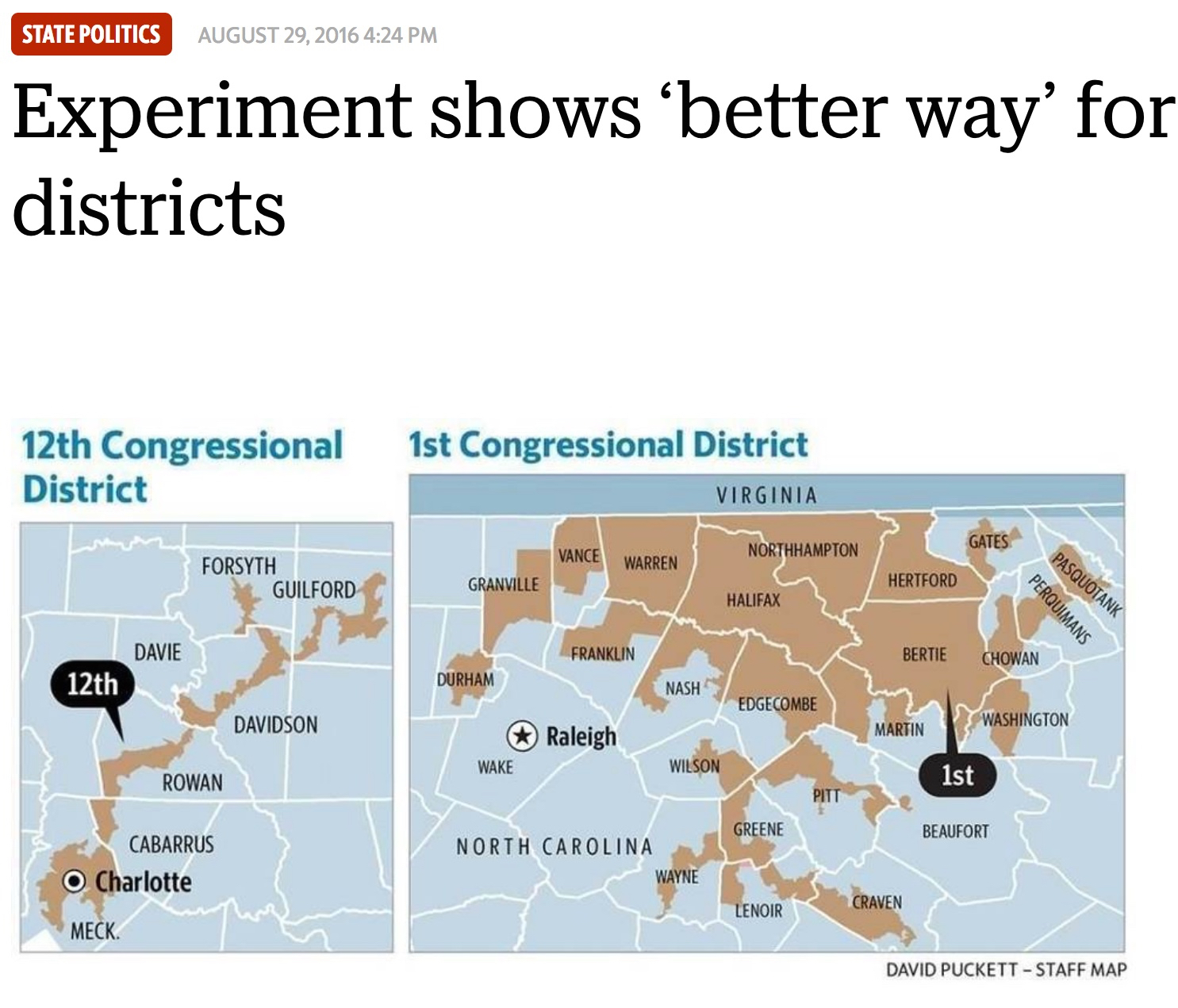
The problem with that implication — that Republicans originated the cringe-inducing 1st and 12th Districts — is that variations of these same crazy-looking districts date back to the early 1990s. Democrats originally drew those two districts to comply with a federal order to create two majority-minority districts. The same two districts survived in slightly altered form during the early 2000s. Republicans simply tweaked them in 2011.
Here’s the map drawn by Democrats for the 1992 election.
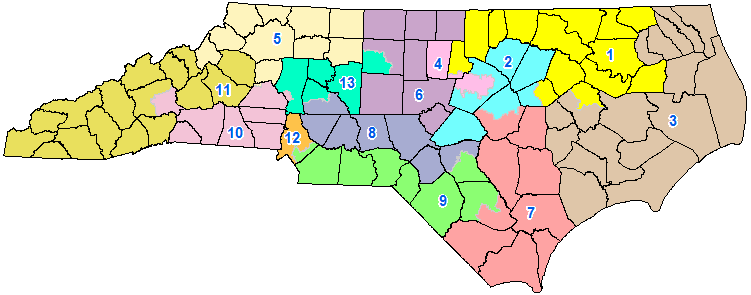
Here’s the map drawn by Democrats for the 2002 election.
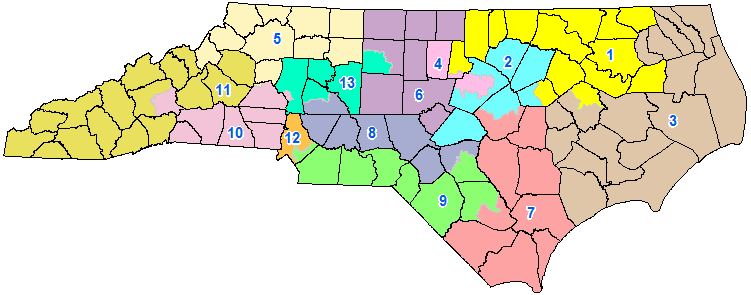
Here’s the map drawn by Republicans for the 2012 election.
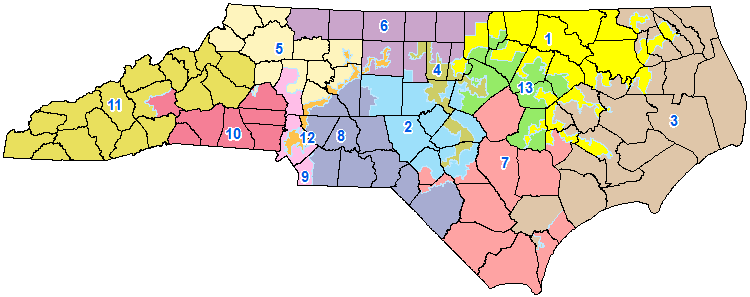
Note that in each map, the 1st District extends through multiple tentacles from its base in northeastern North Carolina, while the 12th District looks like a ribbon stretching from Durham to Gastonia in the 1990s and from Greensboro to Charlotte in the 2000s and 2010s.
If the N&O‘s goal was to show that the judge-drawn alternative plan is aesthetically superior to the GOP’s handiwork, the proper point of comparison is the map drawn earlier this year to comply with a court order throwing out the 2011 districts.
Here is that comparison. First, the newly enacted maps designed to elect 10 Republicans and three Democrats to the U.S. House of Representatives.

Second, the maps created by a panel of former N.C. judges.
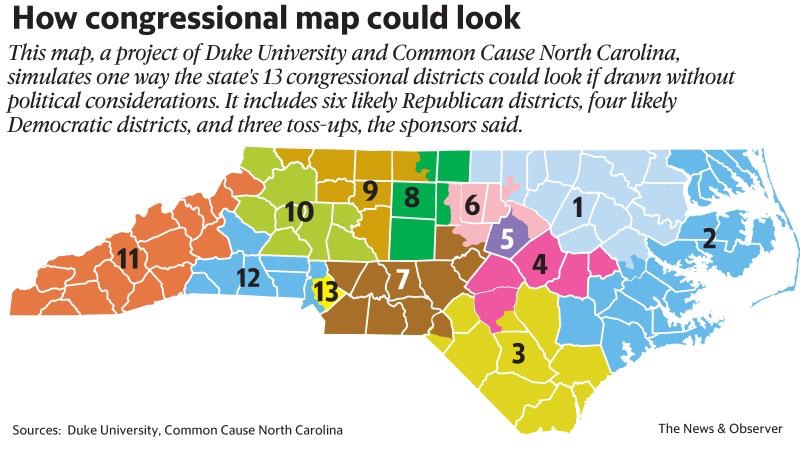
Does the second map look better than the first? That’s certainly a judgment call. But at least readers ought to have the opportunity to compare apples to apples.


